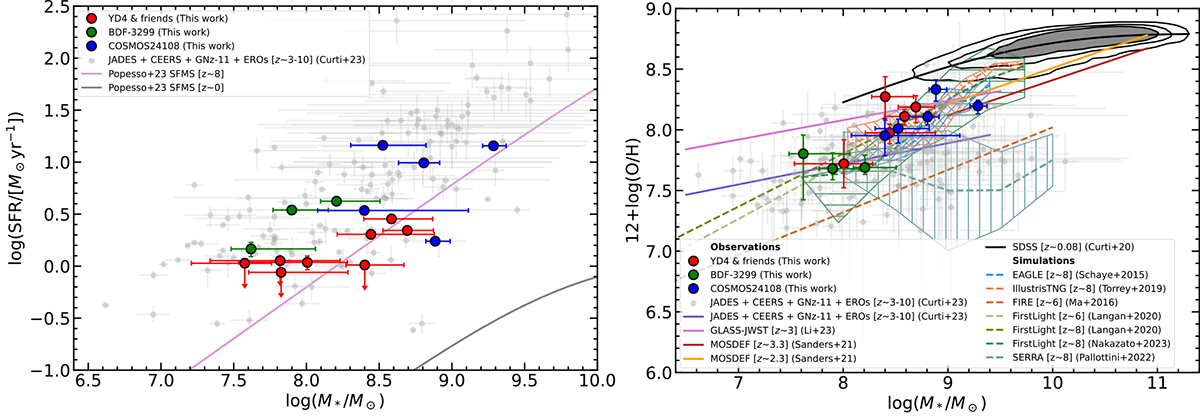Fig. 5.

Download original image
Star formation rate versus stellar mass (left) and gas-phase metallicity versus stellar mass (right) for the single spatial components in the systems from this work (red, green, and blue circles). In grey circles we show for comparison the compilation of z ∼ 3 − 10 galaxies from JADES (Curti et al. 2024; including GNz-11, Bunker et al. 2023), CEERS (Nakajima et al. 2023, as re-computed for consistency in Curti et al. 2024), and EROs (Curti et al. 2023; Laseter et al. 2024). Left: The main sequences of star formation (SFMS) at z ∼ 0 and z ∼ 8 from Popesso et al. (2023) are displayed for reference. Right: Best-fit mass-metallicity relations (MZRs) from Curti et al. (2024) for these z ∼ 3 − 10 targets, Li et al. (2023) at z ∼ 3 (GLASS-JWST), Sanders et al. (2021) at z ∼ 3.3 and 2.3 (MOSDEF), and Curti et al. (2020b) at z ∼ 0.08 (SDSS). The high-z MZRs predicted by EAGLE (z ∼ 8; Schaye et al. 2015), FIRE (z ∼ 6; Ma et al. 2016), IllustrisTNG (z ∼ 8; Torrey et al. 2019), FirstLight (z ∼ 6 and z ∼ 8, for log(M*/M⊙)≲9 at z ∼ 6; Langan et al. 2020; and z ∼ 8, for log(M*/M⊙)≳9 at z ∼ 6; Nakazato et al. 2023), and SERRA (z ∼ 8; Pallottini et al. 2022) cosmological simulations are also displayed.
Current usage metrics show cumulative count of Article Views (full-text article views including HTML views, PDF and ePub downloads, according to the available data) and Abstracts Views on Vision4Press platform.
Data correspond to usage on the plateform after 2015. The current usage metrics is available 48-96 hours after online publication and is updated daily on week days.
Initial download of the metrics may take a while.


